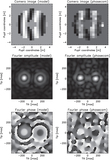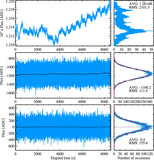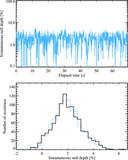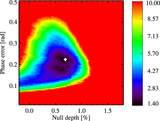Image Details
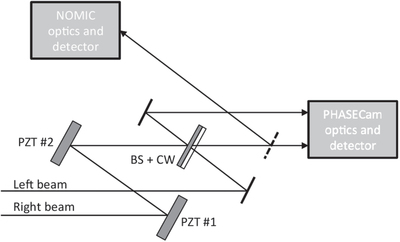
Caption: Figure 2.
Conceptual schematic of the nulling and PHASECam beam combination. Beam combination is done in the pupil plane on a 50/50 beamsplitter (BS), which can be translated to equalize the pathlengths between the two sides of the interferometer. To achieve an achromatic suppression of light over a sufficiently large bandwidth (8–13 μm), a compensator window (CW) with a suitable thickness of dielectric is introduced in one beam. Both outputs of the interferometer are directed to the near-infrared phase sensor (PHASECam), while one output is reflected to the NOMIC science detector with a short-pass dichroic. Note that this sketch does not show several-fold mirrors and biconics. The complete diagram can be found in Hinz et al. (2008).
Copyright and Terms & Conditions
© 2016. The American Astronomical Society. All rights reserved.




